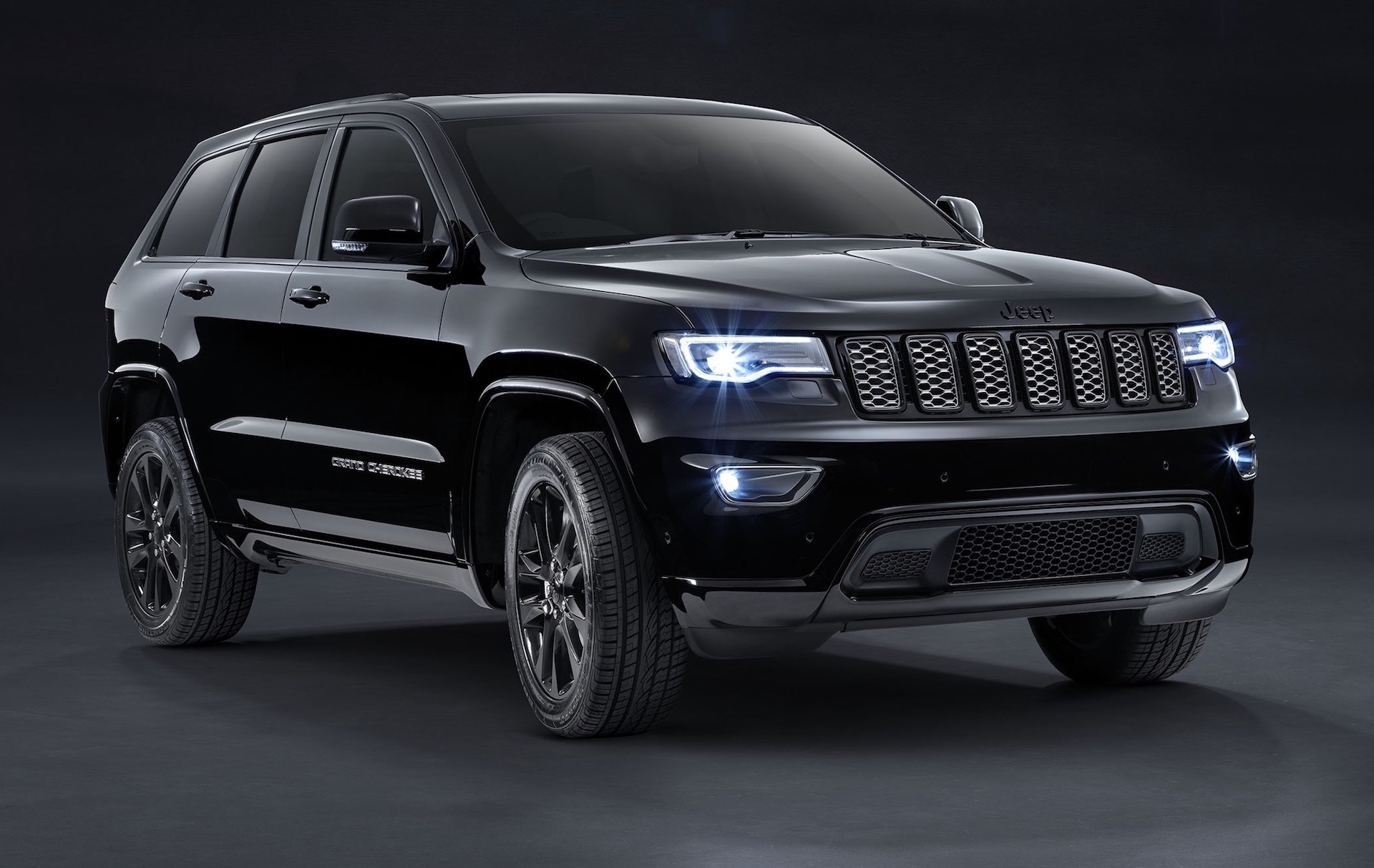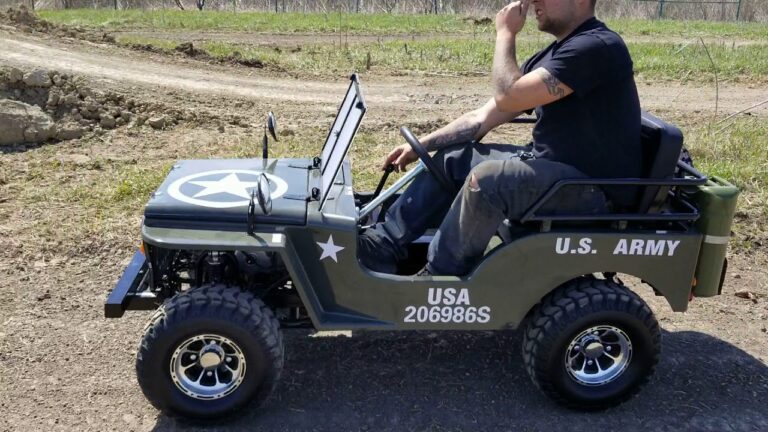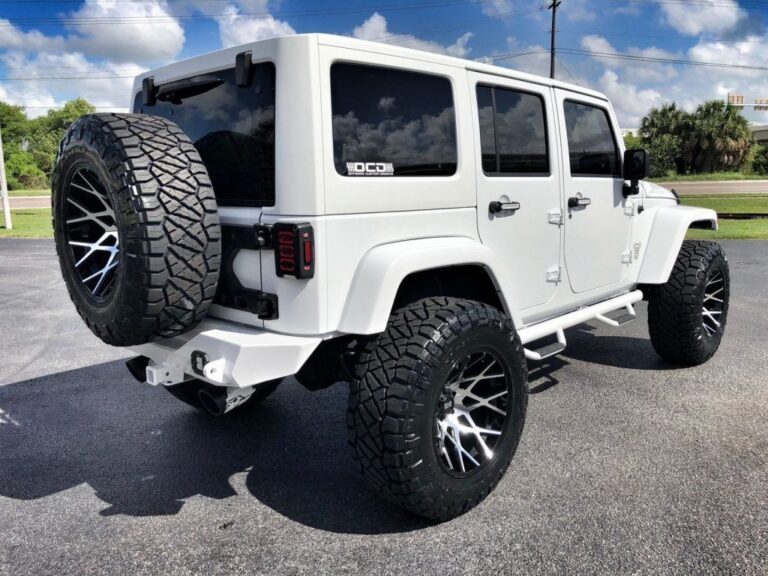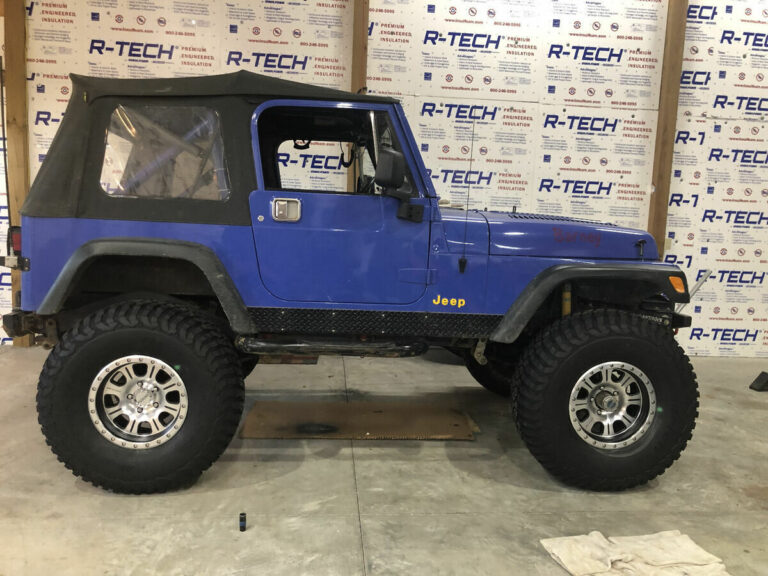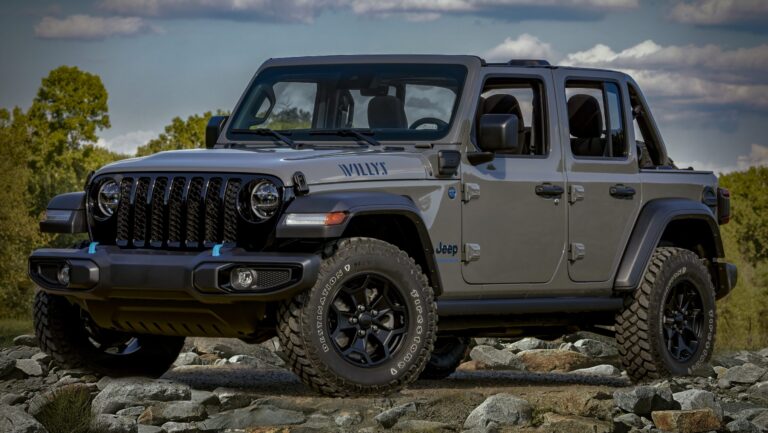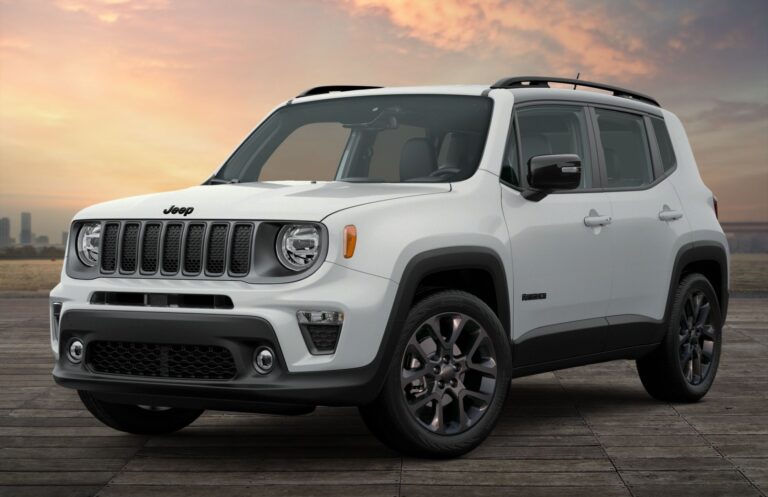Jeep Comanche Pioneer For Sale: Unearthing a Classic Utility Icon
Jeep Comanche Pioneer For Sale: Unearthing a Classic Utility Icon jeeps.truckstrend.com
In the vast landscape of classic American vehicles, few blend rugged utility with cult appeal quite like the Jeep Comanche. Born from the legendary XJ Cherokee platform, the Comanche, especially the practical Pioneer trim, offers a unique proposition for enthusiasts and practical-minded individuals alike. For sale, these trucks represent more than just used vehicles; they are a piece of automotive history, a testament to Jeep’s enduring legacy of building go-anywhere machines, now with the added versatility of a pickup bed. This comprehensive guide will delve into what makes the Jeep Comanche Pioneer a sought-after vehicle, what to look for when considering one for purchase, and practical advice for navigating the market.
A Glimpse into History: The Enduring Appeal of the Comanche Pioneer
Jeep Comanche Pioneer For Sale: Unearthing a Classic Utility Icon
The Jeep Comanche (MJ) was produced from 1986 to 1992, emerging as a compact pickup truck derived from the popular Cherokee (XJ) SUV. Sharing its unibody construction, solid axles, and much of its powertrain with its SUV sibling, the Comanche quickly earned a reputation for its robust nature and off-road prowess, distinguishing itself from traditional body-on-frame pickups of the era.
The "Pioneer" trim level was a mid-range offering, striking a balance between the basic SporTruck and the more upscale Chief or Eliminator models. It typically featured a more comfortable interior than the base model, often included desirable options like four-wheel drive, and was commonly equipped with the venerable 4.0-liter inline-six engine. Its relatively straightforward design, combined with Jeep’s legendary capability, has cemented its status as a highly desirable classic for collectors, off-roaders, and those seeking a unique, capable, and increasingly rare utility vehicle. Its relatively low production numbers compared to the Cherokee also contribute to its growing appeal and value in the classic market.
Why a Jeep Comanche Pioneer Deserves Your Consideration
Choosing a Jeep Comanche Pioneer for sale isn’t just about buying a truck; it’s about investing in a piece of Americana that offers a blend of practicality and character rarely found in modern vehicles.
- Unmatched Utility in a Compact Package: Unlike full-size pickups, the Comanche’s compact dimensions make it nimble and easy to maneuver, yet its 6-foot (or rare 7-foot) bed offers surprising hauling capability for its size. It’s perfect for light hauling, outdoor adventures, or simply as a distinctive daily driver.
- Off-Road Prowess with Classic Flair: Sharing the XJ’s rugged underpinnings, including coil-sprung front and leaf-sprung rear solid axles, the Comanche is inherently capable off-road. Its relatively light weight and excellent approach/departure angles make it a formidable trail companion, while its classic boxy aesthetics turn heads wherever it goes.
- Rugged Durability and Simplicity: Equipped with the legendary AMC 4.0-liter inline-six engine (especially the High Output versions from 1991-1992), these trucks are known for their longevity and reliability. Their mechanical simplicity means they are relatively easy to work on, making them appealing to DIY enthusiasts.
- Growing Collector’s Item Potential: As fewer well-preserved examples remain, the value of Jeep Comanches, particularly those with the 4.0L engine and 4×4, has been steadily appreciating. A well-maintained Pioneer can be a solid investment that offers enjoyment while potentially increasing in worth.
- Strong Aftermarket Support: Due to its close ties with the XJ Cherokee, a vast array of aftermarket parts, accessories, and knowledge bases are available, making modifications, repairs, and upgrades relatively straightforward.
![]()
The Pre-Purchase Inspection: What to Look For
When considering a Jeep Comanche Pioneer for sale, a thorough inspection is paramount. These vehicles are old, and even well-maintained examples will have quirks.

- Rust, Rust, Rust: This is the Comanche’s Achilles’ heel. Pay meticulous attention to:
- Frame Rails: Especially where the unibody transitions to the rear frame sections that support the bed.
- Floorboards and Rocker Panels: Check under the carpet and along the exterior.
- Bed Floor and Mounts: Look for soft spots or bubbling paint.
- Inner Fenders and Wheel Wells: Common rust traps.
- Lower Door Sills: Often overlooked.

- Engine Condition:
- 4.0L I6: Listen for unusual noises (knocking, ticking), check for excessive smoke from the exhaust, and look for oil leaks (rear main seal is common but not always catastrophic).
- Renix System (1987-1990 4.0L): These use a unique engine management system that can be finicky. Ensure all sensors are working correctly; common issues include crank position sensor and oxygen sensor failures.
- Cooling System: Check for leaks, proper fan operation, and clean coolant. Overheating is detrimental to these engines.
- Transmission and Drivetrain:
- Automatic (AW4): Check fluid color and smell. Test for smooth shifts through all gears, including reverse.
- Manual (AX-4/5/15): Test clutch engagement, listen for grinding, and ensure smooth shifting.
- Transfer Case (NP207/231/242): Engage 2WD, 4-High, and 4-Low. Listen for grinding or clunking. Ensure the linkage operates smoothly.
- Axles/Differentials: Check for leaks, excessive play in U-joints, and abnormal noises.
- Suspension and Steering:
- Leaf Springs: Inspect for sag (common on the rear), broken leaves, or worn bushings.
- Front Coils: Check for broken coils or worn isolators.
- Ball Joints, Tie Rod Ends, Control Arm Bushings: Check for play.
- Steering Box: Look for leaks or excessive play in the steering wheel.
- Electrical System: Test all lights, gauges, power windows (if equipped), HVAC, and radio. Pay attention to any warning lights.
- Interior and Exterior: Assess the condition of seats, dashboard (cracks are common), headliner, and door panels. Check for signs of accident damage or poor previous repairs on the body.
Common Challenges and Practical Solutions
Owning a vintage vehicle like the Comanche Pioneer comes with its own set of considerations.
- Rust: The most significant challenge. Early detection and remediation are key. For minor surface rust, wire brushing and rust-converter primers can help. For structural rust, professional welding and fabrication are often required.
- Renix System Quirkiness: While reliable when sorted, the Renix system can be sensitive to sensor failures. Many resources and online communities (like ComancheClub.com) offer detailed diagnostic guides and solutions. Carrying spare common sensors (CPS, TPS) is good practice.
- Sagging Leaf Springs: Over time, the rear leaf springs can flatten or even invert, reducing ride height and load capacity. Aftermarket add-a-leaf kits, full leaf spring replacements, or shackle relocators are popular solutions.
- Cooling System Maintenance: The 4.0L engine runs hot. Regular flushing, proper thermostat function, and ensuring the fan clutch (or electric fan on some models) works efficiently are crucial. Upgrading to an all-aluminum radiator is a popular modification.
- Parts Availability: While mechanical components shared with the XJ Cherokee are abundant, specific Comanche-only parts (e.g., bed panels, unique interior trim, specific rear glass) can be much harder to find and more expensive. Networking with other owners and checking specialty salvage yards is often necessary.
Navigating the Market: Finding Your Comanche Pioneer
Finding a Jeep Comanche Pioneer for sale requires patience and knowing where to look.
- Online Marketplaces: Websites like Craigslist, Facebook Marketplace, eBay Motors, and local classifieds are primary sources. Use specific search terms like "Jeep Comanche," "MJ," or "Comanche Pioneer."
- Dedicated Forums and Social Media Groups: ComancheClub.com is an invaluable resource, often featuring classified sections. Facebook groups dedicated to Jeep Comanches or XJ Cherokees are also excellent places to find vehicles for sale and get advice.
- Classic Car Auction Sites: Sites like Bring a Trailer or Mecum occasionally feature well-preserved or custom Comanches, though these tend to be higher-end examples.
- Word of Mouth and Local Searches: Tell friends, family, and local mechanics you’re looking. Sometimes, the best finds are hidden in garages or barns nearby.
The Buying Process: Tips for a Smooth Transaction
Once you’ve found a potential candidate, here’s how to proceed:
- Research Values: Use online resources (like completed auction results or valuation guides) to understand the fair market value based on condition, mileage, and features.
- Pre-Purchase Inspection (PPI): If you’re not mechanically inclined, or even if you are, consider hiring a trusted independent mechanic specializing in older Jeeps to perform a PPI. This objective assessment can save you from costly surprises down the line.
- Test Drive Thoroughly: Pay attention to steering feel, brake performance, transmission shifts, and any unusual noises. Test all accessories.
- Negotiate Wisely: Be prepared to negotiate based on the vehicle’s condition, any identified flaws, and market value. Don’t be afraid to walk away if the price isn’t right or if the seller is unwilling to address concerns.
- Verify Documentation: Ensure the seller has a clear title in their name and that the VIN on the title matches the vehicle’s VIN plate. Inquire about service records.
- Plan for Transport: If buying out of state, factor in shipping costs or the time/expense of driving it home.
Pricing Your Dream Comanche Pioneer: A Comprehensive Guide
The price of a Jeep Comanche Pioneer for sale can vary dramatically based on its condition, mileage, engine, drivetrain (2WD vs. 4WD), trim level, and originality. The Pioneer trim, being more common than the Eliminator but less so than the base SporTruck, generally falls into a mid-range value.
Here’s an estimated price guide:
| Condition Category | Description (Key Factors) | Estimated Price Range (USD) |
|---|---|---|
| Poor / Project | Significant rust, non-running engine, major mechanical issues, incomplete, heavy wear. | $1,000 – $3,500 |
| Fair / Driver | Running but needs significant work, moderate rust, cosmetic flaws, high mileage. | $3,500 – $7,000 |
| Good / Solid | Reliable daily driver, minor rust (surface), sound mechanically, decent interior/paint. | $7,000 – $12,000 |
| Excellent / Restored | Near-showroom condition, minimal to no rust, fully functional, low mileage, well-maintained. | $12,000 – $25,000+ |
Note: These are estimates. A rare 4.0L I6 4×4 manual transmission Pioneer in excellent condition will command the higher end of the range, potentially exceeding it for truly pristine or historically significant examples. Conversely, a 2WD 2.5L I4 auto will be on the lower end.
Concluding Thoughts
The Jeep Comanche Pioneer for sale represents a unique opportunity to own a blend of classic Jeep capability and practical pickup utility. Its rugged design, the legendary 4.0-liter engine, and its increasing rarity make it a compelling choice for enthusiasts and those seeking a distinctive vehicle. While requiring careful inspection for common issues like rust, and potentially needing some dedicated maintenance, the rewards of owning a Comanche – from its undeniable character to its off-road prowess – far outweigh the challenges. With patience, thorough research, and a keen eye, you can find a Comanche Pioneer that will serve you faithfully for years to come, turning heads and tackling trails with equal aplomb.
Frequently Asked Questions (FAQ)
Q1: What’s the main difference between a Jeep Comanche and a Jeep Cherokee (XJ)?
A1: The primary difference is the body style. The Comanche (MJ) is a compact pickup truck with a separate bed, while the Cherokee (XJ) is an SUV with an enclosed rear cargo area. They share the same front end, unibody construction up to the B-pillar, and many mechanical components.
Q2: Which engine is best for the Comanche Pioneer?
A2: The 4.0-liter inline-six engine is highly recommended due to its legendary reliability, power, and vast aftermarket support. The High Output (HO) version (1991-1992) is generally preferred over the Renix system (1987-1990) for its slightly higher power output and simpler engine management, though both are excellent engines.
Q3: Are parts hard to find for the Jeep Comanche Pioneer?
A3: Mechanical parts (engine, transmission, axles, suspension) are generally easy to find due to extensive interchangeability with the Jeep Cherokee (XJ). However, Comanche-specific body panels, bed components, and some interior trim pieces can be very challenging and expensive to source, often requiring searching salvage yards or specialized forums.
Q4: Can a Jeep Comanche Pioneer be a reliable daily driver?
A4: Yes, with proper maintenance and addressing any pre-existing issues, a Comanche Pioneer can be a very reliable daily driver. The 4.0L engine is known for longevity. Like any vintage vehicle, it will require more attentive care than a modern car, but its simplicity makes it relatively easy to maintain.
Q5: Is rust a major concern with these trucks?
A5: Yes, rust is the biggest enemy of the Jeep Comanche. Pay very close attention to the frame rails (especially where the unibody meets the rear frame section), floorboards, rocker panels, and the bed itself. Thorough inspection for rust is crucial before purchase.
Q6: What’s the typical fuel economy for a Jeep Comanche Pioneer?
A6: Fuel economy varies based on the engine, transmission, and drivetrain (2WD vs. 4WD). A 4.0L 4×4 Comanche typically gets around 15-20 miles per gallon (MPG) combined, with 2WD models potentially getting slightly better.
